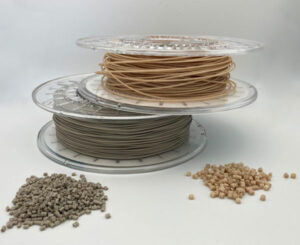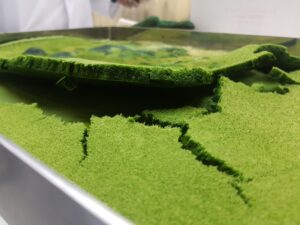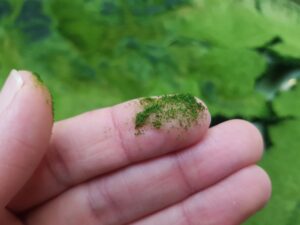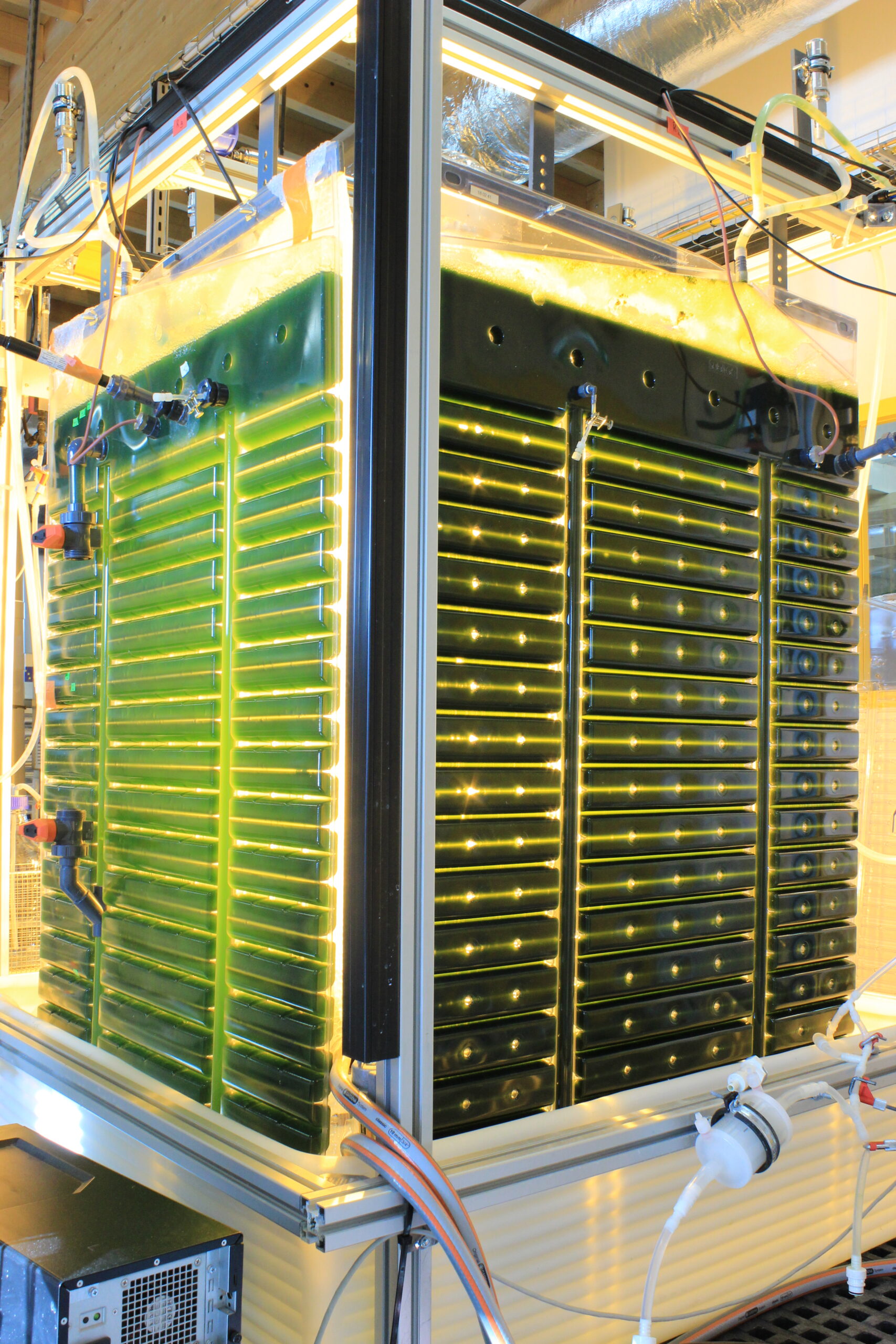
3D printing filament prototype made of compounded PHA
In this first period of the project, the main concept of NENU2PHAR, which is the use if microalgae biomass as carbon feedstock to produce PHA biopolymer by means of bacterial fermentation, has been demonstrated. The production of Chlorella at semi-industrial scale began and several kg of starch have been produced. Hydrolysate from microalgal starch has been successfully used as fermentation substrate for PHA-producing bacteria. The process of pre-treatment and extraction of PHB was developed at lab-scale using a green solvent and a first trial of the upscaling extraction and purification of PHB was carried out. 3 different bio-based micro and nano-fillers were successfully developed micro-nanofibrillated cellulose (MNFC), cellulose nanocrystals (CNC) and starch nanocrystals (SNC).
 The biomaterials formulated in NENU2PHAR for rigid and durable applications obtained promising results and more than 25 kg of materials have been compounded for rigid cast extrusion and for 3D printing filament application. The compounds and formulations developed are processed via different thermoplastic processing techniques. The injection of moulded standard samples presented good characteristics and the blending of PHA other biopolymers showed to be very promising for fiber development. The characterization of fossil-based counterpart materials has been done and this information has been used as reference for the development of NENU2PHAR prototypes. The eco-design strategies of NENU2PHAR products have been stablished and this eco-design recommendations will be later implemented in all the product prototypes and validated through life cycle sustainability assessment.
The biomaterials formulated in NENU2PHAR for rigid and durable applications obtained promising results and more than 25 kg of materials have been compounded for rigid cast extrusion and for 3D printing filament application. The compounds and formulations developed are processed via different thermoplastic processing techniques. The injection of moulded standard samples presented good characteristics and the blending of PHA other biopolymers showed to be very promising for fiber development. The characterization of fossil-based counterpart materials has been done and this information has been used as reference for the development of NENU2PHAR prototypes. The eco-design strategies of NENU2PHAR products have been stablished and this eco-design recommendations will be later implemented in all the product prototypes and validated through life cycle sustainability assessment.
 Concerning the end of life of PHA materials, preliminary results of the ongoing test obtained promising results in home/industrial biodegradation and marine water degradation. The life cycle assessment tool for the environmental assessment of the target plastic products has already been developed and the nano-safety assessment methodology that will guarantee a high level of protection of the human health and the environment is established.
Concerning the end of life of PHA materials, preliminary results of the ongoing test obtained promising results in home/industrial biodegradation and marine water degradation. The life cycle assessment tool for the environmental assessment of the target plastic products has already been developed and the nano-safety assessment methodology that will guarantee a high level of protection of the human health and the environment is established.

